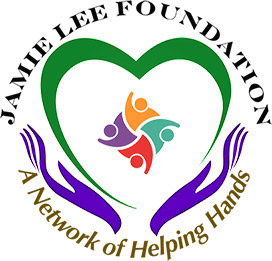In memory of James (Jamie) Lee Bartleson

James Lee Bartleson (known as Jamie or Jimmy by family and close friends) was born May 6, 1959, as the first child of Jim and Sharon Bartleson. Raised as a rancher/farmer Jamie showed tremendous ability with both animals and equipment—joining cattle drives at 9 years of age and driving harvest trucks at 12.
In Junior High, Jamie joined the wrestling team (quickly qualifying for a varsity position) and ran track. His good looks and charm made him a favorite among his peers and adults. He had a tremendous ability to communicate, and that, plus his unusual maturity inspired trust and association with teachers, coaches, and business and church leaders.
Shortly before his 14th birthday, Jamie began to show signs of increasingly severe health issues. For the next 4 years, Jamie lived mostly in hospitals, subjected to a battery of tests and given over 100 hypotheses from medical experts attempting to diagnose his condition and provide proper treatment.
During these 4 grueling years, Jamie went from a powerful 150 lbs to 69 lbs at the age of 17. For the last 6 months of his life, Jamie was unable to communicate and became mostly deaf and blind from his illness. It was only after his death in February of 1977 that an autopsy revealed he had been suffering from germinoma—a cancer that had only 6 other known victims at that time.
Germinoma most often refers to a tumor in the brain. Since 1994, MeSH has defined germinoma as “a malignant neoplasm of the germinal tissue of the gonads, mediastinum, or pineal region.” In Jamie’s case, the tumors were located up and down his brain stem and wrapped around his pituitary gland—resulting in too many symptoms of other diseases/conditions for proper diagnosis of his condition.
Intracranial germinoma occurs in 0.7 per million children. Metastasis has been noted in about 22% of cases at the time of diagnosis. Males are roughly twice as commonly affected in developing germinomas. Today they are most commonly diagnosed between the ages of 10 and 21.
Germinomas are sensitive to both chemotherapy and radiotherapy. For this reason, treatment with these methods can offer excellent chances of long-term survival, even cure.
Due to the few known cases, and fewer options in the 1970s for treating even known cases, Jamie’s family’s only option was to seek alternative forms of treatment for his symptoms of lack of strength, weight loss, and cognitive decline. While ultimately it was unable to preserve his life, the family learned the value of treatments that can improve the quality of life for those suffering extreme pain and suffering.
Today, the Jamie Lee Foundation exists to improve the quality of life for those suffering from the effects of age, poverty, poor health, and constant pain – with a special interest in senior care, those afflicted with crippling diseases such as muscular dystrophy, arthritis, and diabetes, and Title I youth & children. The projects (past and present) featured on this website are targeted to address these conditions.



